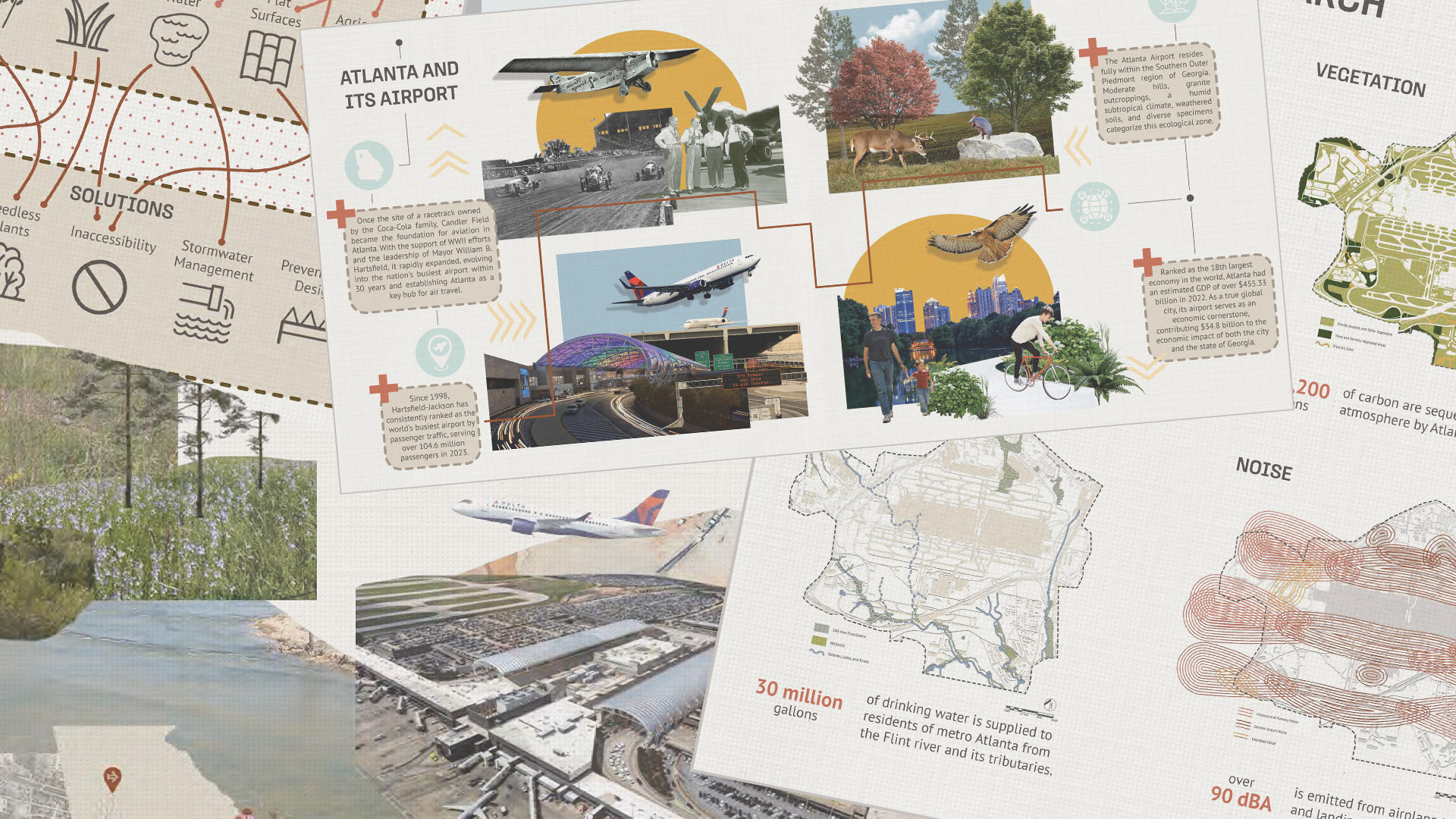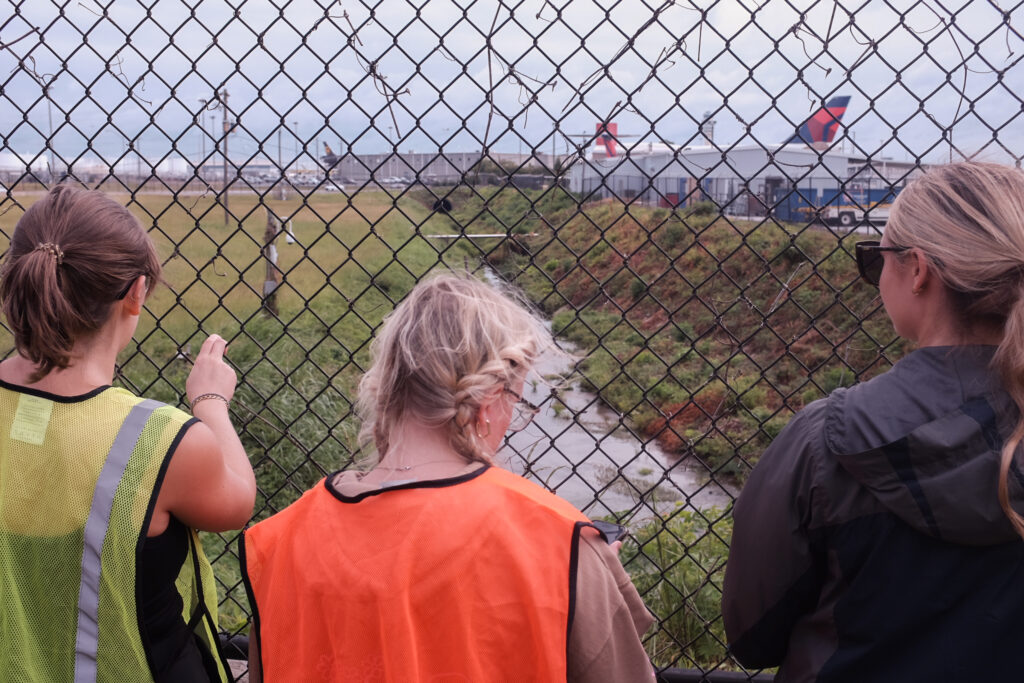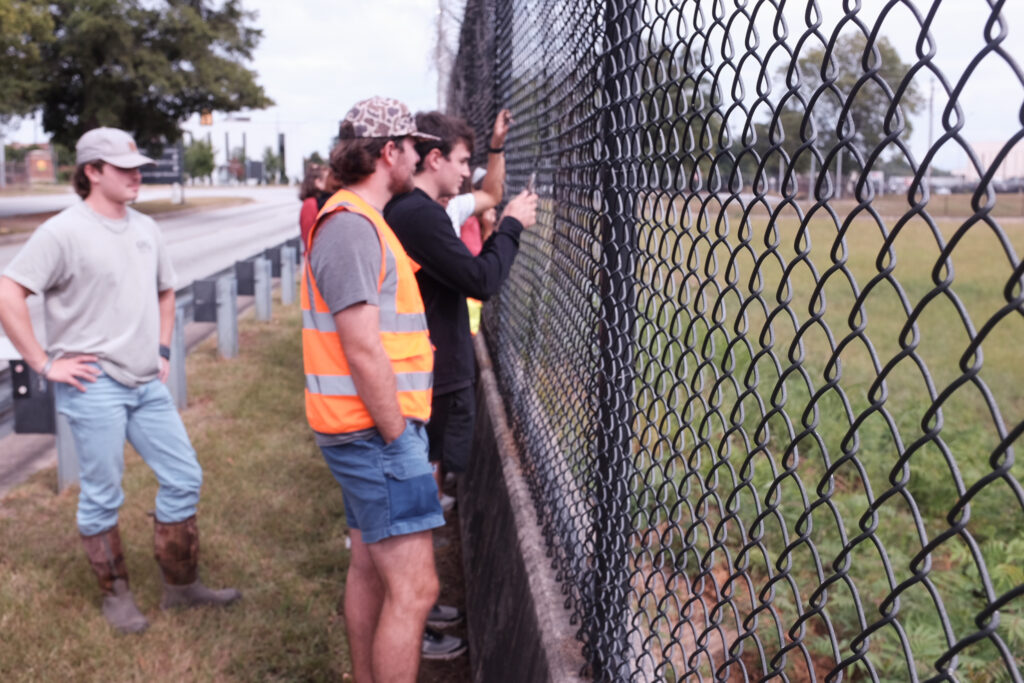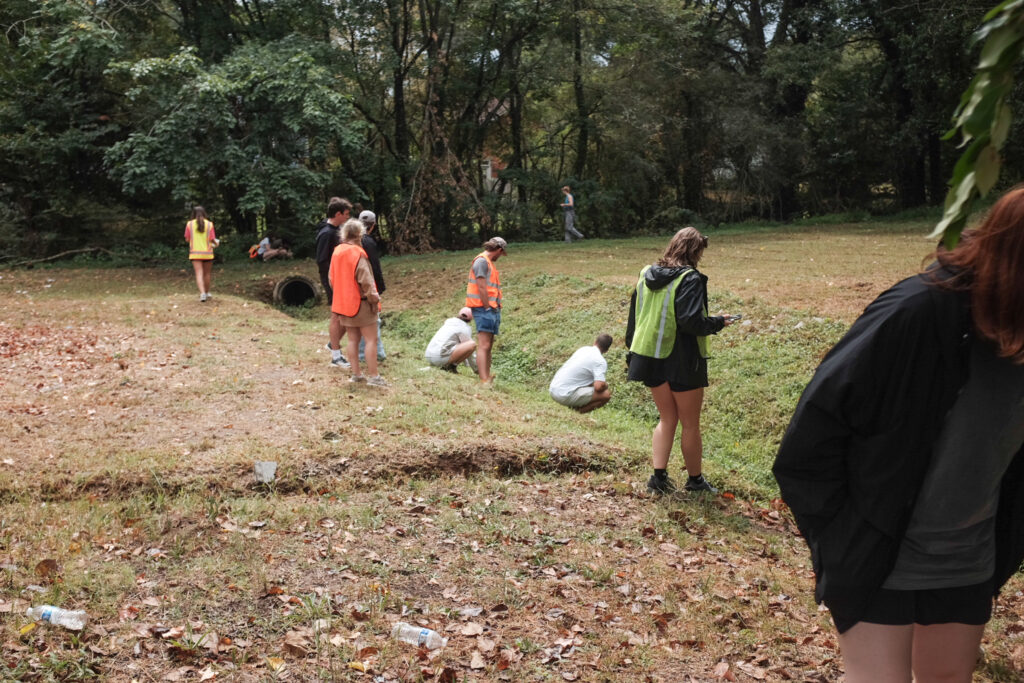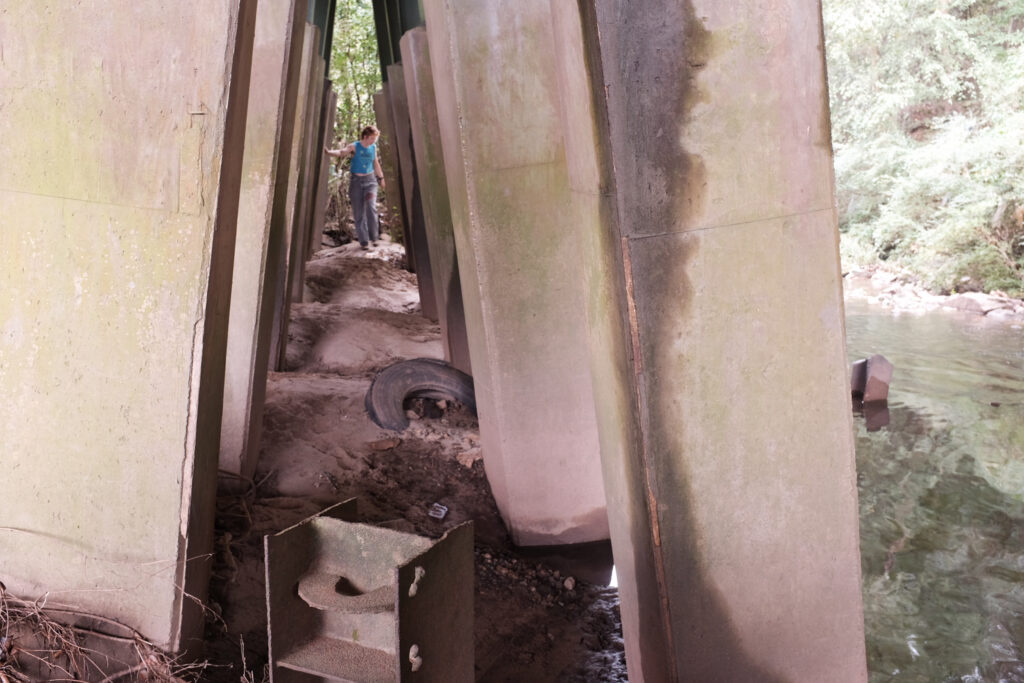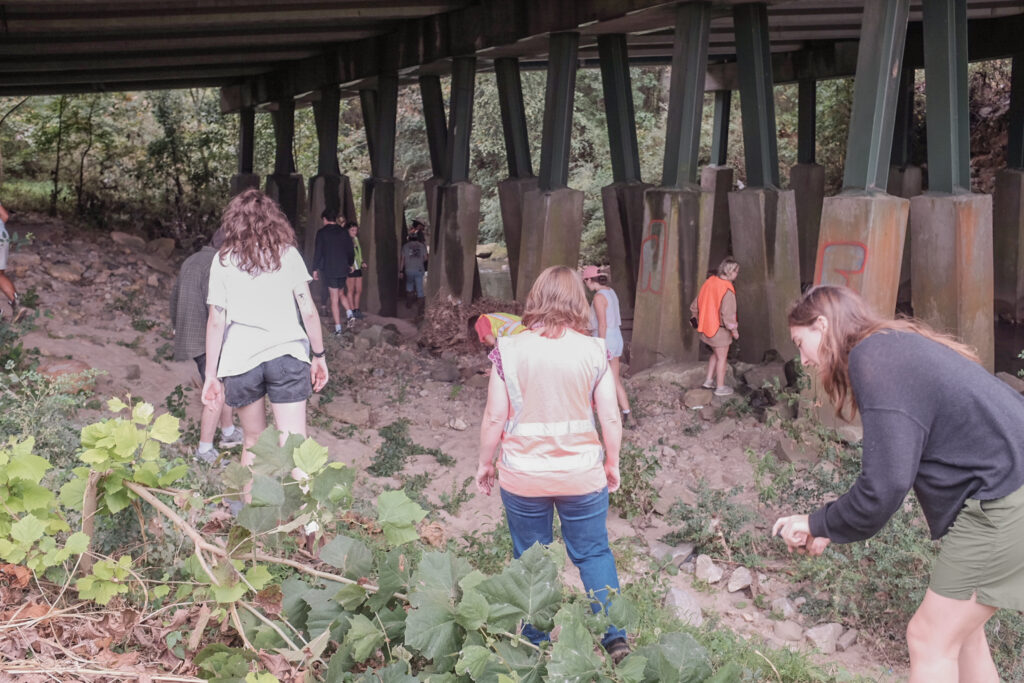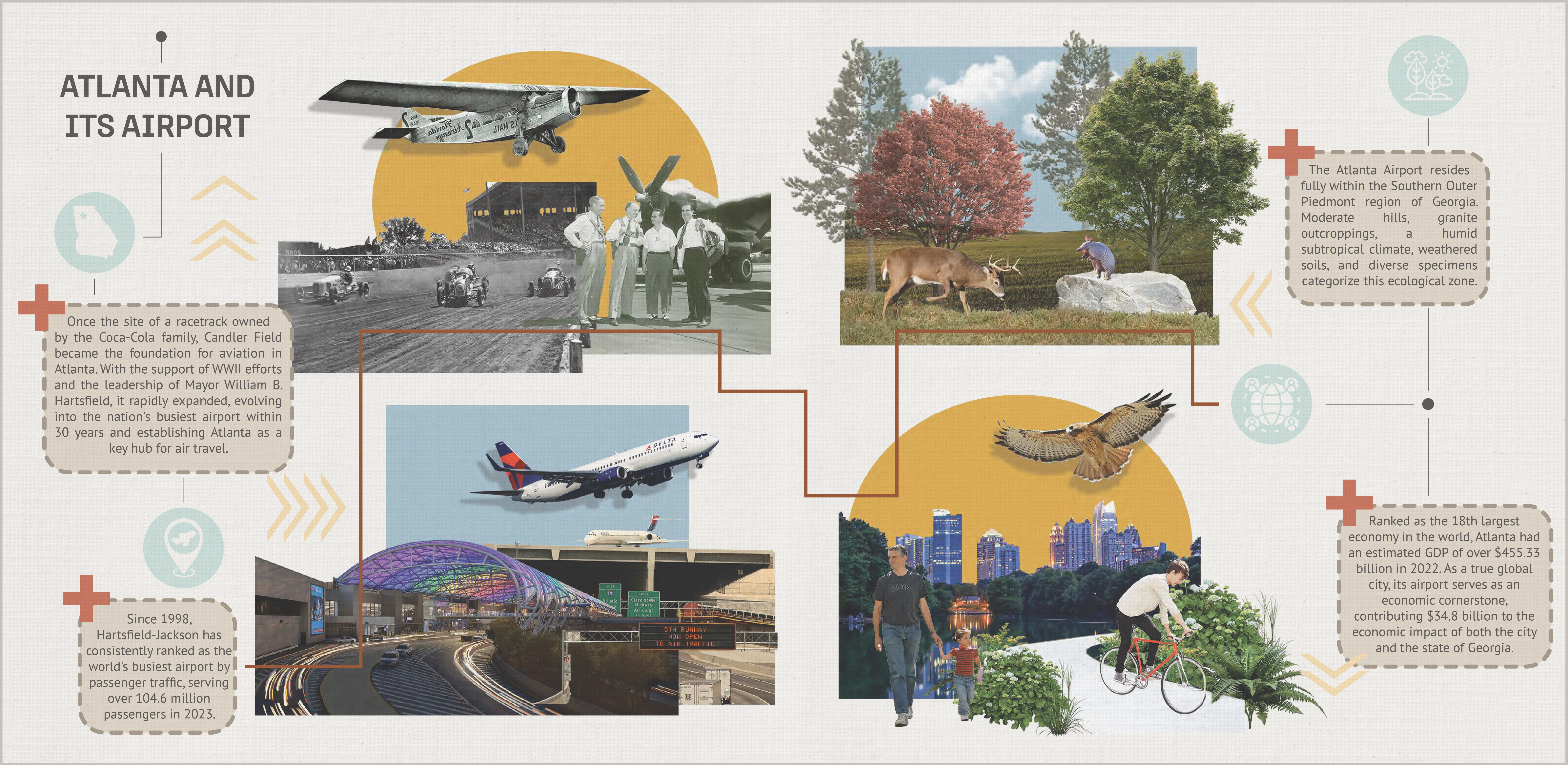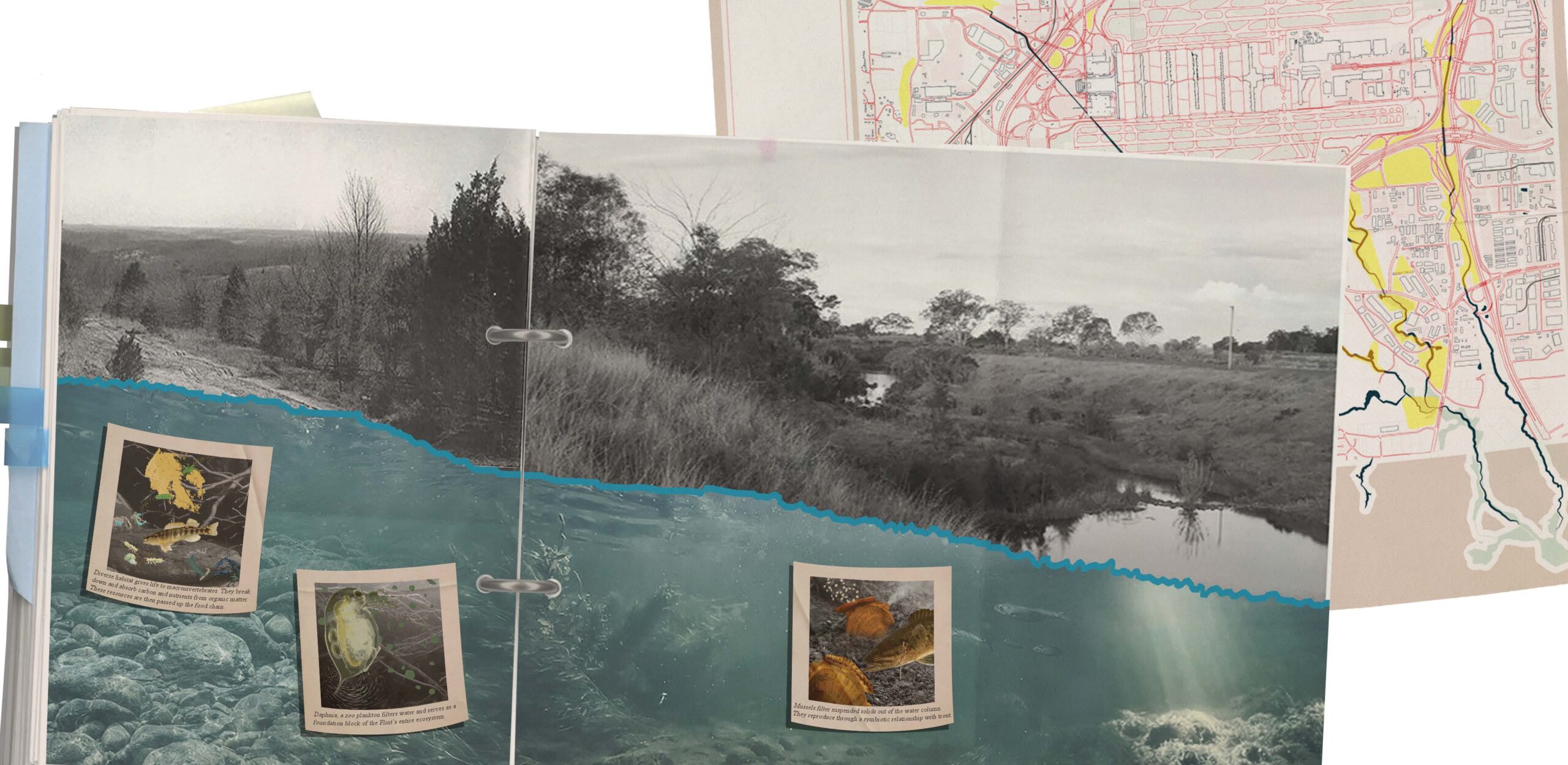What if the world’s busiest airport was also a shining example of ecological harmony? At the College of Environment + Design, our senior landscape architecture studio took on the challenge through developing a Biodiversity Action Plan (BAP), a visionary project reimagining the 4,700-acre grounds of Hartsfield-Jackson Atlanta International Airport. Led by instructor Carley Rickles in collaboration with Hannah Palmer of Finding the Flint, the studio explored how ecological design can thrive within complex infrastructure, envisioning an airport that not only moves people, but also supports the agricultural economy and natural resources downstream, striving to reconcile the airport’s operational demands with the needs of the natural environment.
The journey began with a site visit in September, where students toured the airport grounds with Hannah Palmer and R.J. Gipaya from the Flint Riverkeeper. They examined the Flint River’s headwaters, which flow beneath the airport before resurfacing to the south. This vital waterway, Georgia’s second-longest river, ties the airport to a broader network of agricultural and wildlife ecosystems, emphasizing its environmental significance.
As part of their research, students dove into the airport’s environmental and cultural history and analyzed existing policies to identify limitations and opportunities for improvement. Their investigations covered layers of ecological factors, such as soil quality, sunlight exposure, and local flora and fauna. Additionally, they studied the airport’s role in regional water systems, including its impact on the Flint River.
However, the project is about more than just protecting ecosystems; it’s about envisioning a future where airports actively contribute to ecological health. Students are designing innovative solutions that blend functionality with biodiversity. These ideas include forest restoration, bioremediation techniques, and creating habitats for species like the red-tailed hawk.
The students’ efforts will bring together site plans and design recommendations that challenge the traditional perception of airports as purely utilitarian spaces. Their vision seeks to transform the airport into a resilient system that connects natural areas, supports native species, and honors the cultural and ecological richness of the region. This project not only has the potential to turn the airport into a beacon of biodiversity but also serves as an inspiring model for integrating ecological stewardship into even the most unexpected places. By reimagining the landscape, these students are proving that sustainability and innovation can go hand in hand.
Click the presentations below to learn more and view the student’s work!

